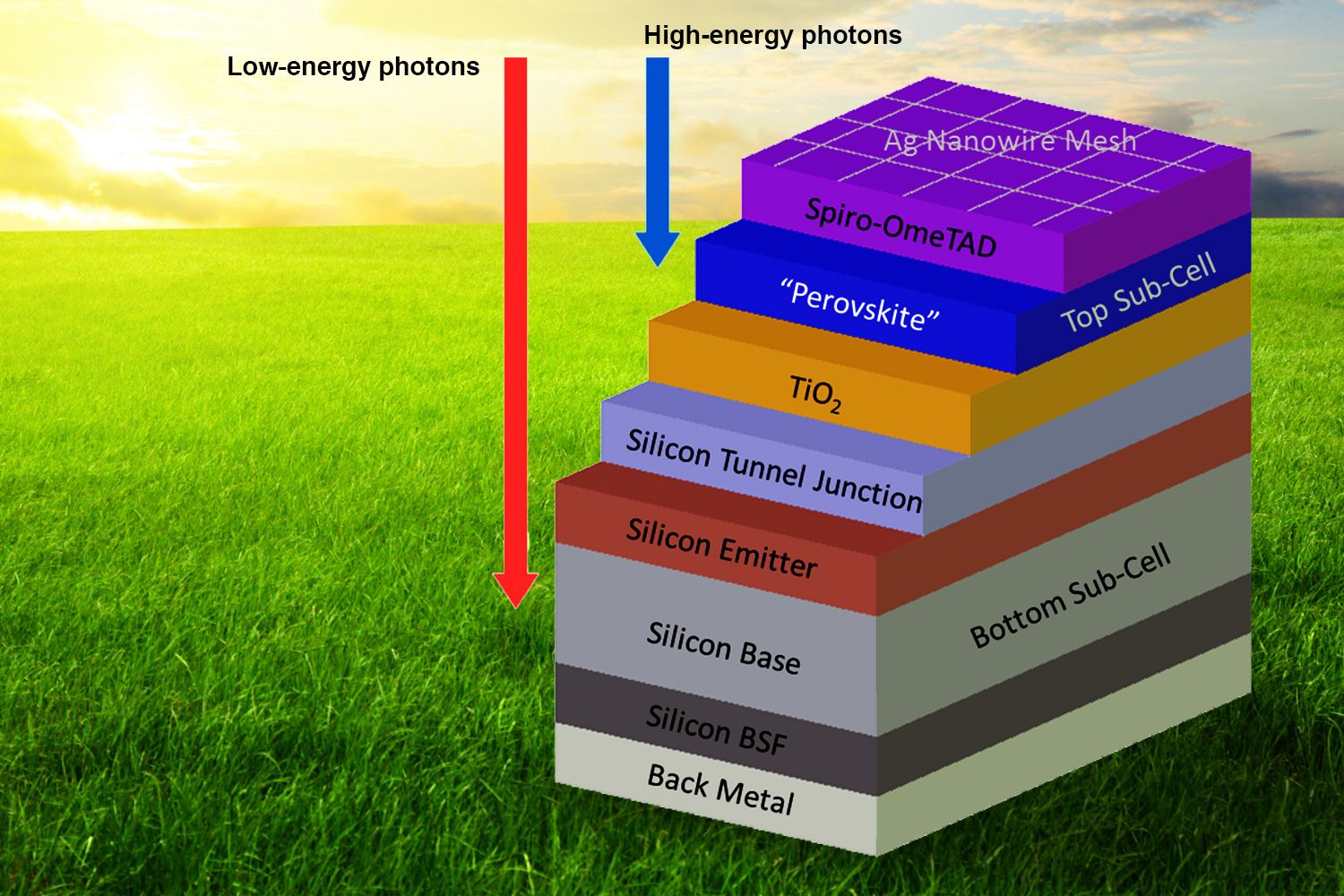
Source: MIT News
The Science of Tandem Solar Cells
Understanding Tandem Solar Cells
Tandem solar cells are a type of solar cell that consists of multiple layers of photovoltaic materials stacked on top of each other. This design allows for a more efficient use of the solar spectrum by splitting it into different sections and optimizing each section with a specific solar cell.
Types of Tandem Solar Cells
There are two main types of tandem solar cells: individual cells and series-connected cells. Individual cells offer more flexibility in bandgap selection but are more complex to fabricate. On the other hand, series-connected cells are simpler to manufacture but are limited by the same current flowing through each cell, restricting the choice of bandgaps that can be used.
Monolithic Tandem Solar Cells
The most common arrangement for tandem solar cells is the monolithic design. In this setup, all the cells are grown as layers on a single substrate, with tunnel junctions connecting the individual cells. This configuration helps in maximizing the efficiency of the stack by ensuring efficient current flow between the cells.
Efficiency and Bandgaps
Increasing the number of bandgaps in a tandem solar cell stack has the potential to boost the overall efficiency of the system. However, in practice, it is challenging to find semiconductor materials that allow for arbitrary bandgaps while maintaining high quality. The availability of suitable materials plays a crucial role in determining the practical efficiency limits of tandem solar cells.
Future Prospects
Research and development in the field of tandem solar cells are ongoing, with a focus on exploring new materials and fabrication techniques to overcome current limitations and enhance the efficiency of these devices. The quest for higher efficiency and cost-effective tandem solar cells continues to drive innovation in the renewable energy sector.
By understanding the science behind tandem solar cells and the factors influencing their efficiency, we can pave the way for advancements in solar energy technology and contribute to a more sustainable future.

Source: YouTube
